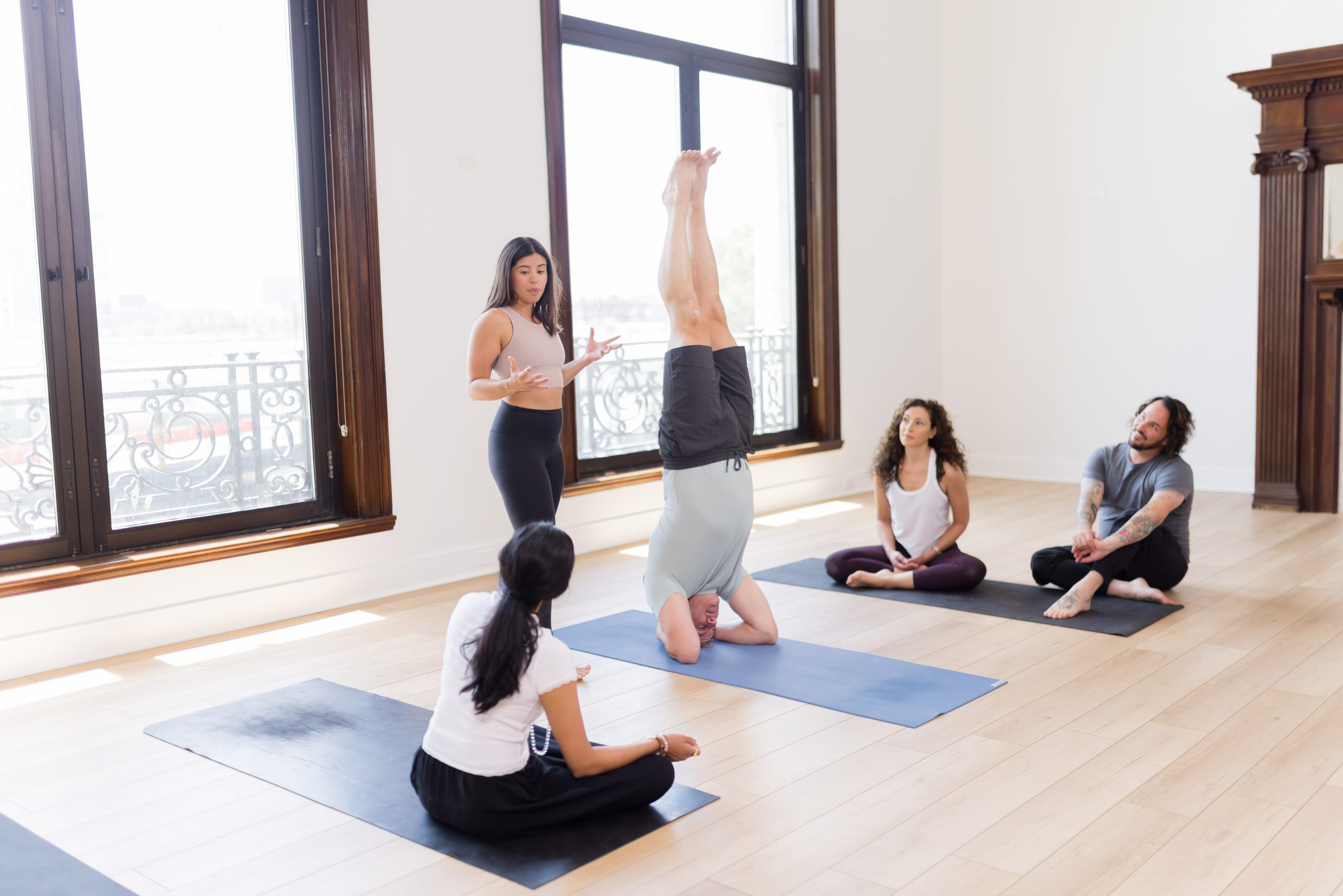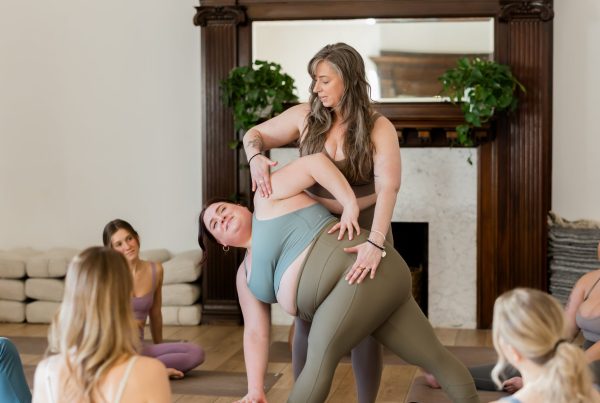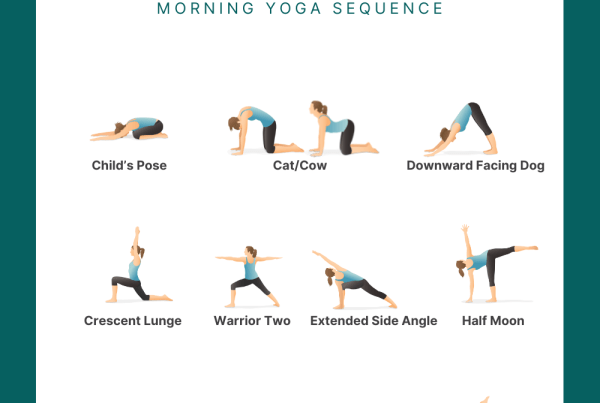
Financial freedom seems to be at the top of the list of everyone’s manifestations lately… but where does full time yoga teacher fall in that? As a professional fitness instructor and full-time yoga teacher, I have learned what it takes to make the money you seek doing what you love.
I have also spoken with many people who teach full time, who teach part-time, and also those who have dreams of making teaching a full-time career. If you’ve worked your way to this blog post, it’s possible that you’re thinking of making the switch from whatever career you’re in now to being a full-time yoga teacher.
A yoga teacher’s salary can vary quite a lot depending on what they’re teaching, where they’re teaching, experience level, compensation structure and other factors which we’ll get in to below.
Let’s dive in to a little bit of the specifics when it comes to yoga teachers and what they make… Scroll down to read through our blog, or check out our video below:
Is it possible to support yourself as a yoga instructor when you’re just starting out?
Finances are usually one of the first questions to come up when thinking about turning your yoga teaching into a full-time career. I will say that yes, it is possible to support yourself as an instructor in the first stages IF you truly want to. I will also say that the road to making this your full-time career is not a linear, concrete path. You will most likely have to forge your own path, seek out and/or create opportunities, and allow yourself to step outside of your comfort zone to grow your career. I will talk more about this later, but you really have to trust yourself and fully believe that your dream career is possible.
How much do yoga teachers make?
There are a variety of factors to consider when sharing how much money yoga teachers make. A yoga teacher’s salary range can vary wildly based on where you live, what kind of environment you’re teaching in, your experience level, what type of business you’re engaged in, or how frequently you are teaching. Per class it’s typical for teachers to make somewhere between $30-$85 but it could be less or it could be drastically higher. In a corporate setting, yoga teachers can earn $200-$400/hour bringing classes into offices! Below we’ll go into more depth on these statistics, look at different compensation structures, places to teach, and other options for yoga teachers to make money doing what they love.
Classes are likely to be your most consistent form of income, as in, you’ll consistently get paid for the weekly classes you teach. Workshops, yoga retreats, and other similar one-off events will yield a higher profit but generally speaking they are not as consistent as weekly classes. The amount of classes you teach vary from person to person, but regardless if you’re looking to make teaching yoga your full-time career you will have to create other forms of income outside of classes.
What is a yoga teacher’s salary on average?
We can get some more specific information looking at the data available online. According to ZipRecruiter, the national average to get paid as a yoga instructor is $31 per hour. On Glassdoor, the national average to get paid as a yoga instructor is $55,076 per year.
Indeed has a regional breakdown of yoga teacher hourly rates for 2025:
- New York, NY: $46 per hour
- Brooklyn, NY: $44 per hour
- Denver, CO: $40 per hour
- Miami Beach, FL: $39 per hour
- Austin, TX: $39 per hour
- San Diego, CA: $37 per hour
- Chicago, IL: $37 per hour
- Indianapolis, IN: $36 per hour
There are ranges below these limits and above these limits for which a yoga instructor can get paid. You should familiarize yourself with what the studios pay in your area. A great way to get in the door is by subbing classes. By subbing classes you’ll be introduced to the studio’s payment method which can give you a better understanding of what you could make as a yoga instructor in your area. To better understand these rates and how you can earn more as a yoga teacher, lets look at how studios compensate their instructors.
*Again this varies by region, country, area, etc. These are estimated figures based on geographical data.
How do studios typically pay their yoga instructors?
There are three main ways that studios pay their instructors, here are a few to get familiar with:
- Flat-fee
- Flat-fee + “bonus per head”
- Pay based on “per head” attendance
- Space rental
What’s the flat fee I can expect for a yoga class?
A flat fee means that regardless of how many students are in your class, you’ll get paid the same amount every time. If you’re getting paid a flat fee, it’s likely that you’ll get paid somewhere between $30-$70 per class. This depends on where you’re teaching. Studios with less overall membership counts and member visits could mean that you’re getting paid less than a studio with a higher overhead count and more member visits. Another factor is the region where you’re teaching. A studio in a rural area with less member visits and potentially a lower cost of living would mean your pay is less than a studio in an urban area with higher member visits and higher cost of living. The pro for this payment method is that you know what you’re making every time and it’s guaranteed regardless of how many people take your class or who is taking your class. It should be noted that some studios will pay you for your time even if no one shows up, some studios will not. The con for this payment method is that there’s a limit to how much you can make. You could be a talented teacher with a waitlist of students who want to take your class, but you won’t be getting paid for that.
What does it mean to get paid a flat fee with a “bonus per head”?
When getting paid a flat fee with a bonus per head, you’ll receive a flat fee for a particular range of students plus a bonus per head beyond what warrants a flat fee rate. This can vary widely from studio to studio, but you can expect your flat fee to be about $30-$50 with the minimum number of students to guarantee a flat fee being 0-12 students. Some studios will pay you the flat fee even if 0 students show up because you dedicated your time to teaching the class. Other studios will require at least 1 student to show up to guarantee a flat fee. The typical bonus per head is $1-$4. So given the numbers used here, if a studio’s capacity is 30 people and the maximum number of students show up…you would get paid $30-$50 for 12 people showing up, and then $1-$4 for the remaining 18 students per head. The pro to this type of payment method is that you can make a lot of money depending on class size. It can be very motivating to market your classes and get students in the door. The con to this type of payment method is that it can make estimating your profit from the studio a little difficult. If you’re unsure how many students will show up every class, it’s hard to know exactly how much money you’ll bring in. This is also excluding staff members, other teachers, guests, or free trial members who typically do not bring in money for the studio therefore people who fall into these categories will not count as a head but they will take a spot in your class.
What does it mean to get paid based on “per head” attendance?
This means you will get paid based on per head attendance means you get paid strictly on the number of paying members who attend your class. The typical range per head is $1-$4, so if a studio’s capacity is 30 students and you have max attendance you can expect to make somewhere between $30-$120 per class. Again, this is not considering the fact that staff members, other teachers, guests, or free trial members might be taking your class in which scenario it would be unlikely for you to get paid for those people even though they’ll be taking a spot.
What does it mean to rent space?
Sometimes, a studio will rent their space to the teacher and allow them to book their own students. In this scenario, the onus is on the instructor to get enough students into class to earn money – however their earning potential has a little more upside if the rental costs are affordable. In some instances, new teachers might opt to rent space in a gym or other location before opening their own studio to start developing a following. This allows the teacher to operate without the long term commitment of a lease, and they’re able to take advantage of the studio or gym’s infrastructure as well.
What are additional ways to make money as a yoga instructor?
As noted above, the following factors can affect your pay aside from the payment method itself: the location of where you live and work (rural vs. suburban vs. urban), the capacity of the studio that you teach at, and your experience level. This is only considering how much you get paid per class. There are other means to consider to make money as a yoga instructor…
Private clients, workshops, retreats, writing, managerial work, or other administrative work are ways to supplement your earnings from classes as a yoga instructor. In fact, if you’re seeking to make a career out of your yoga teaching, I would say these other forms of income are not just recommended but are necessary. Reason being, if you’re running around trying to make ends meet by teaching classes and only teaching classes, there is a high likelihood that you will burn out, which will not serve anyone. These other outlets are also great ways to broaden your skillset and offerings.
Yoga seeks to guide us towards the highest possible version of ourselves which is situated in peacefulness, love, and surrender. If you ask me, peace is hard to attain when we’re teaching 5 classes every single day with no time dedicated towards ourselves or our loved ones. As a yoga instructor, it’s imperative that you tend to your own practice (which is sometimes hard to do) because that’s the only way we can truly teach with genuine intention and we can only do that with time.
More on the hourly rates…
To create a sustainable career, you must increase what you are making per hour of your time. However you do that is up to you but I can share ways to make up to double or even triple what you would make in a single class.
- Private clients: Working with private clients is one of the main ways to create steady income at a higher pay scale. A general range for what to charge for a private lesson is $60-$200. How to determine what you charge requires you evaluate a few factors like your location, availability, target market, etc. Teachers also sometimes develop their own online yoga classes to offer without the need to rent a studio.
- Your experience: Your experience 100% needs to be factored in when you are thinking about what to charge somebody. When you are making a transaction with someone, there is an exchange of currency. In this case you are exchanging yoga services for money, meaning if you are brand new to teaching yoga you cannot be charging the same amount of money as someone who has been teaching for years. While you have a lot to offer, you do not have as much to offer yet as it pertains to teaching yoga. As far as integrity goes, you must be real with yourself and your client about what is fair. As you gain experience, knowledge, and overall depth within the practice you will be able to offer much more and can ask for top dollar.
- Location: Are you traveling to your client or is your client traveling to you? You have to consider this when thinking about price. In terms of not self-abandoning, you cannot charge the same amount for someone who is within your neighborhood vs. someone who lives an hour away. If you’re traveling a farther distance which boils down to more of your time, you should factor that into what you will charge. If your client is coming to your home, you should also factor that into what you will charge. Like I said before, you have to consider all of the exchanges which are occurring when you make a transaction with someone and there are other currencies outside of money.
- Skillset/Offerings: Lastly, you must factor in what is included in the session you are offering? Is it only asana? Or are you bringing sound bowls to incorporate sound healing? Are you reiki certified and will you be offering energy work in addition to asana? Are you a physical therapist and will you be offering manual work for an injury? What’s in your overall package which you will be offering to your clients and what does your client want? This will change what you are charging someone. What you are including in your package could offset an initial reduction in price due to your experience?
Yoga Workshops, Retreats, and Trainings
Workshops, retreats, and trainings can bring in a lot of income. From a single workshop you can expect to make anywhere from $200-$800 depending on how many people attend your workshop. From a single retreat or training, you could make anywhere from $500-$5,000 or more depending on the capacity of your retreat and how many people attend. It’s even hard to put a range on either of these things because it is so dependent on the workshop, retreat, or training itself. But essentially, you can make a lot from these types of events. You can charge a higher amount because of all the planning, prep-work, and actual work that it takes to execute a workshop, retreat, or training. Charging for these types of events can come down to the studio, but you should always be thinking about what your ideal and fair number would be for what you would like to profit in exchange for your energy, time, and resources. Both your clients and you should feel honored and aligned in the exchange that is occurring. If you’re charging top dollar, you must be putting in top dollar work to remain in integrity. You can consider the same aspects here as you would for a private client when thinking about what to charge people.
If you’re interested in learning how to plan, lead, promote and run a yoga retreat, check out this course on How to Lead a Yoga Retreat.
Writing, Managerial Work, and/or Administrative Work
According to ZipRecruiter, a yoga writer can make an average annual salary of $80,647. This also depends on what publication or entity you would be writing for, if you’re in a full-time position or a freelancing position and the area you’re writing for/in.
Upwork and Fiverr are two websites where freelance writers can find work. On Fiverr, writers who specialize in yoga or wellness can earn between $30 and $200 for each article depending on how long it is, and what type of research goes into it. Other sources cite that studio owners can make about $86,000 a year which means that a manager (not an owner) and anyone doing administrative work will make less than that. How much less is hard to say because every studio is different and what someone profits is dependent on what the revenue of the studio is.
Your mindset must support your dream career…
As I mentioned at the beginning of this article, you must believe that your dream career for teaching yoga is possible. You must believe it in every cell of your being because that is what will help you create and attract opportunities and sustainable income. While teaching yoga full-time is becoming more popular, there’s still no carved out path and no guaranteed income amount as you might find within other fields. This means there are unknowns and that is just a fact. In getting ready to transition, it’s important to remain dedicated to your overall purpose and calling. This will help you navigate your newfound path which requires both taking action and surrendering/receiving. Do the work, stay in alignment, and trust wholeheartedly that you can do this and the universe is supporting you.
Oftentimes when I hear people say they want to become a yoga teacher, it is rarely because of the pay. Yet, countless people have made a transition into teaching yoga full-time…and people continue to do so — how come?
At this point in your life, you may be thinking about making the transition and becoming solely a yoga teacher full time. With the pandemic, inflation, rising healthcare costs, and other factors, you may be considering the risks and rewards in doing so. You want to know: How much do yoga teachers actually make?
Before I go any further, I do want to say that it is possible to make teaching yoga your full-time gig. However, you must actually believe that it is possible. It doesn’t matter what I say, or what anyone else says.
You have to believe that you can and you will make this your full-time career.
I say this because you will most likely not create a livable salary (while staying sane) by only teaching weekly yoga classes. You will need opportunities and ideas that are outside of this construct and you may have to take some risks and/or try new things.
The base pay for teaching classes at a studio
The pay for weekly yoga classes varies depending on the studio you are teaching at (size, location, popularity, amount of classes, etc.) and your experience. However, in NYC, pay can generally range from $30-$80 per class. Based on my experience, you’re looking at an average of $40 per class.
Womp womp.
This is not to discourage you whatsoever! In fact, you can use this information to create the life of your dreams and in a very sustainable manner — financially, energetically, and emotionally.
Find what you want to focus on
Ask yourself some questions so you can narrow your focus about what you’re looking for. Instead of just “yoga teacher,” think about something with more purpose and specificity (after all, you want to live the life you REALLY WANT, right?)
- Are you looking to work for yourself or are you looking to work for someone else (or another entity)?
- What demographic are you interested in working with?
- What is it about the yoga practice that you feel most inclined to share?
- What is in true ALIGNMENT with YOU? (Yes, this requires some deep work but this is how you’ll attract the opportunities which will lead to your version of your rockstar yoga teacher life.)
Diversify your yoga business
Consider other skills or interests that you’d like to offer for work such as content creation, SEO optimization, administrative work, event planning, studio operations/management, etc.
- Think about what skills you currently possess and/or what you enjoy.
- Assess how you can add value either to your own brand or to an outside brand by using those skills or interests.
*Fun Note: I started writing blogs for YogaRenew because I enjoy writing, but never had a professional opportunity to practice it. I also wanted to do something else within yoga education that didn’t involve standing in front of a class.
Inform your professional circle
Let others know that you are interested in making a career change and/or if you’re interested in taking on more work.
- Word of mouth can attract potential clients, employers, and network connections.
- By sharing that you’re interested in making a career change, someone may present an opportunity to you that you hadn’t thought of or someone may love an idea that you have.
Specialize in a specific area of yoga
Create a niche for yourself and participate in specialty trainings and certifications such as prenatal yoga, yin yoga, restorative yoga, anatomy, etc.
- Having a specialty separates you from a sea of yoga instructors. You become a point person for specific topics for your students and other teachers.
- You become an expert in something, which can lead to increased class numbers and opportunities to lead a training or workshop.
Expand your offerings
Look into coaching, mentorship or further resources specifically geared towards increasing your capabilities as a teacher and/or business person.
- Coaching allows you to see where your strengths are and where you can grow.
- You can connect with like-minded individuals interested in living their best life.
- You can receive support in carving out your personal mission, which will inevitably create the opportunities necessary to achieve it.
- Some people have already figured it out, so why not learn from them?
How much yoga teachers make depends on multiple things
Creating your dream career as a yoga instructor is 100% possible, but as you can hopefully see it takes effort. This means that you have to remain steadfast in your practice and in your dreams. You have to stay connected with yourself at all times as this will not only bring in new opportunities, but will help you navigate those opportunities with alignment and integrity. The more you truly believe and trust in yourself to make your dreams happen, the more the universe will catch on and conspire to help you out to fulfill all your dreams on a yoga instructor salary.
Post updated: February 2025










